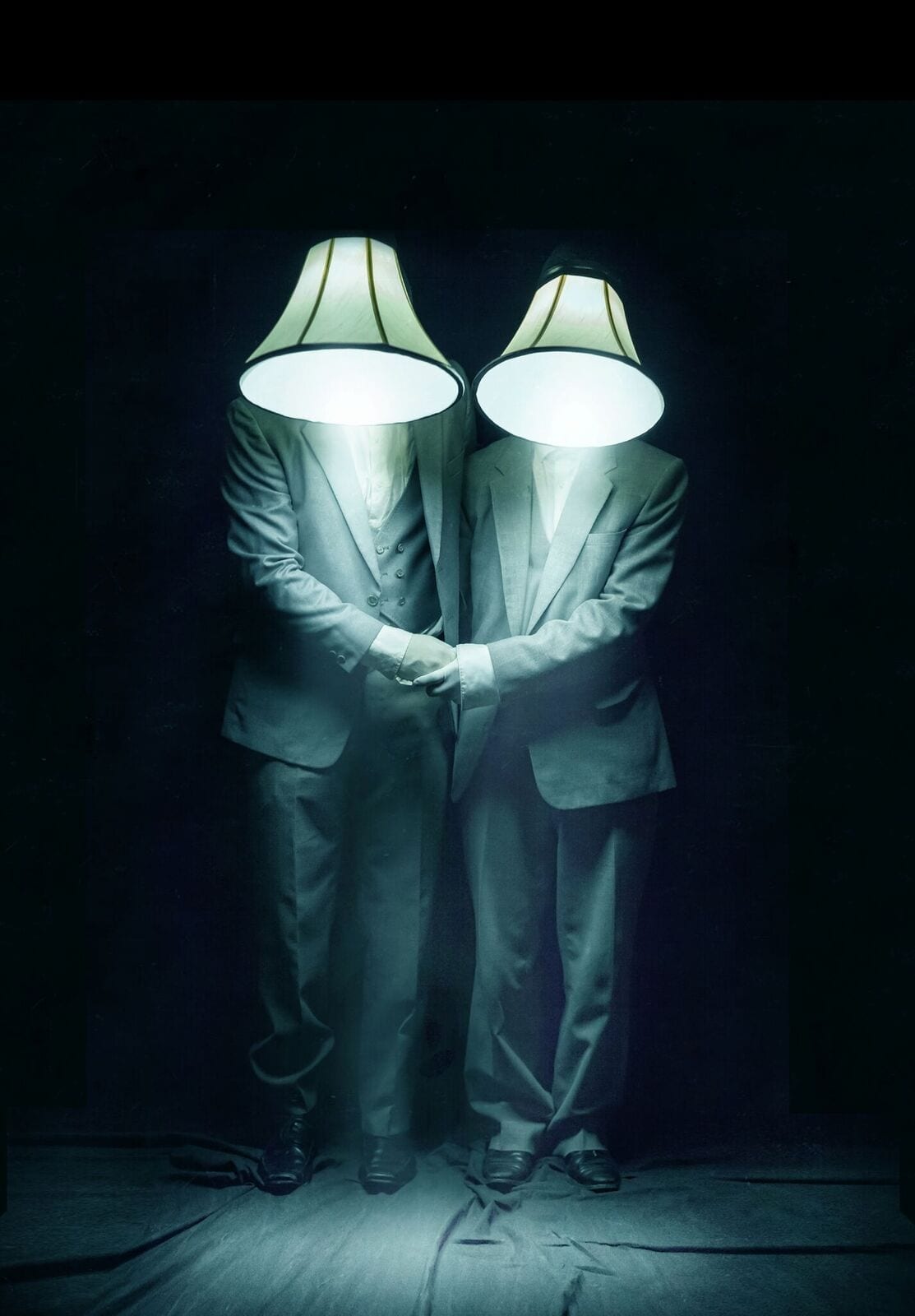Have you ever wondered what the Pixar lamp does beyond your television screen? This show won’t tell you, but the two men hopping around with lampshades on their heads might call the image to mind. James and Jamesy in the Dark by Aaron Malkin, Alastair Knowles, and David MacMurray Smith follows – you guessed it – James (Aaron Malkin) and Jamesy (Alastair Knowles), two men who do one task – “set the stage” by putting down a chair – and are beamed up when done, seemingly on an infinite loop. But they’re never there at the same time. When the two end up in the space together, they help each other discover a little about themselves that they never knew.
The show is meant to be a comedy amidst its philosophical plot line. If you enjoy clown acts, or you are amused by watching young children interact, you’ll enjoy this. James and Jamesy are like two big children. Their comedy employs physical and absurdist humor; they spend a great portion of the show just moving around in peculiar ways, exploring and discovering what their bodies can do, similarly to kids who do and say seemingly random things simply because they find out they can.
To be more specific, watching this show is like watching precocious young children performing Abbott and Costello’s “Who’s on First?” bit. While playing around with each other, James and Jamesy toss around a lot of “whys” and “yeses” and “nos” and “I don’t knows” that often leave you just as confused about their meaning as they are about each other’s. Regarding the aforementioned philosophical plot line, the characters are trying to decipher, “Why are we here?”, “What even is here?”, and “What even is we?” throughout it all.

They figure that out with a little help from the audience. It’s worth mentioning that the show gets interactive. Be prepared to be gawked at, have your hand held, or lean to the side as an actor climbs over your seat, especially if you happen to be in the first five rows or so. The actors respond to motions and noises the audience makes, too. This interaction makes the production a little more exciting than watching two men amble around and ask roundabout questions while waiting for an invisible teleportation force to return. It brings us into their journey and can make each audience member wonder how James and Jamesy might respond to them. It’s a refreshing change from simply asking yourself “Why?” and “What are they doing?” over and over again.
It’s a little redundant and definitely strange. But there are moments of novelty and clarity. The characters explain concepts like “relief” and “here,” ordinary things that we might not stop to define in our everyday lives. And when the audience becomes part of the “we” that James and Jamesy created when they met, there arises an authentic feeling of solidarity and connection between the actors and the audience members that is rare to come by. You might not leave with a hurting stomach, as the humor isn’t everyone’s cup of tea, but you will leave with the sense that you’ve become a part of something inexplicably real.

